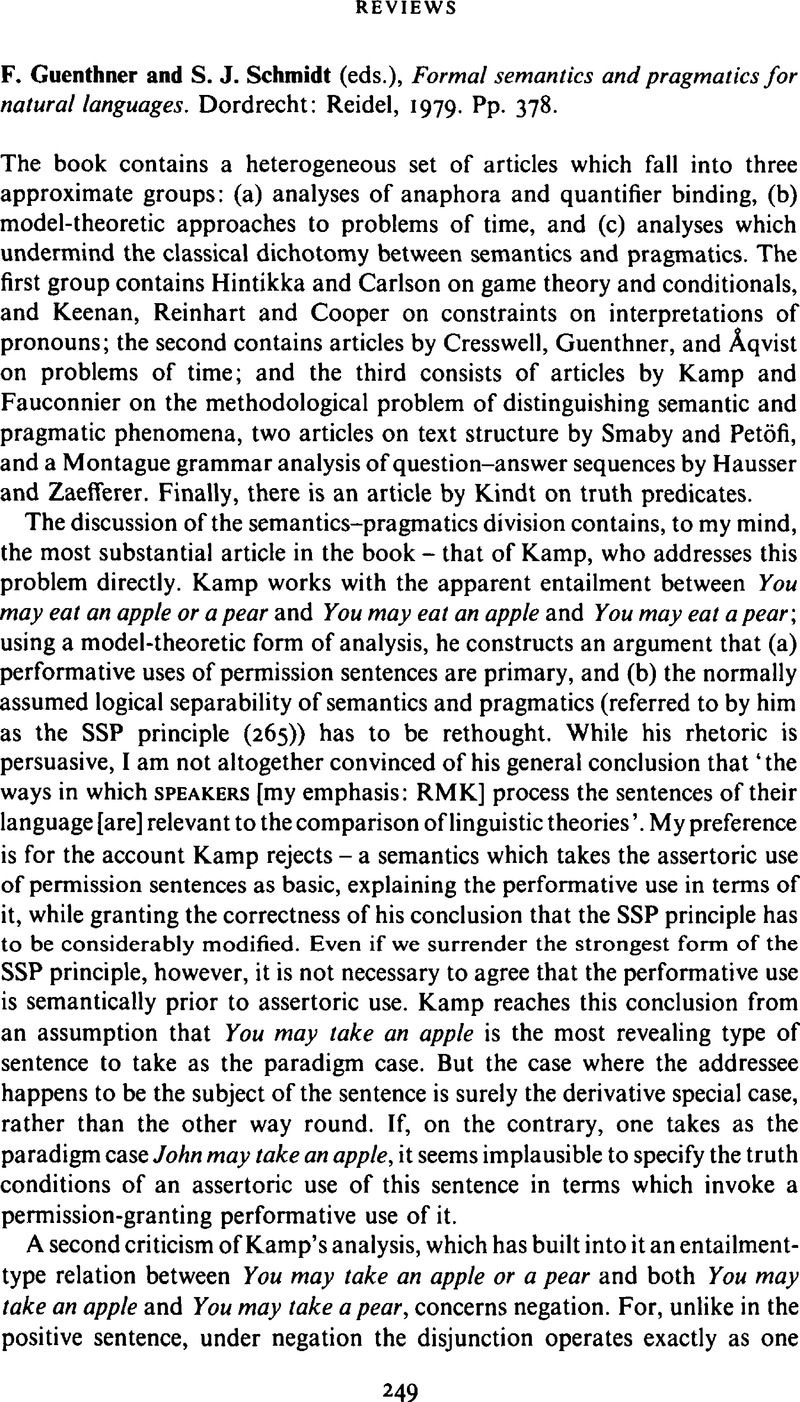No CrossRef data available.
Article contents
F. Guenthner and S. J. Schmidt (eds.), Formal semantics and pragmatics for natural languages. Dordrecht: Reidel, 1979. Pp. 378.
Review products
F. Guenthner and S. J. Schmidt (eds.), Formal semantics and pragmatics for natural languages. Dordrecht: Reidel, 1979. Pp. 378.
Published online by Cambridge University Press: 28 November 2008
Abstract
An abstract is not available for this content so a preview has been provided. Please use the Get access link above for information on how to access this content.

- Type
- Reviews
- Information
- Copyright
- Copyright © Cambridge University Press 1983
References
REFERENCES
Bach, E. & Partee, B. H. (1980). ‘Anaphora and semantic structure’. In Kreiman, J. & Ojeda, A. (eds.), Papers from the para-session on pronouns and anaphora. Chicago Linguistics Society. 1–28.Google Scholar
Gazdar, G. & Sag, I. (1980). Passive and reflexive in phrase structure grammar. In Groenedijk, J., Janssen, T. & Stokhof, M. (eds.), Formal methods in the study of language. Amsterdam.Google Scholar
Hausser, R. (1979). How do pronouns denote? In Heny, F. & Schnelle, H. (eds.), Syntax and semantics, Vol. 10, 93–142.Google Scholar
Kempson, R. & Cormack, A. (1981). Ambiguity and quantification. Linguistics and Philosophy 4.CrossRefGoogle Scholar
Thomason, R. (ed.) (1974). Formal philosophy: selected papers of Richard Montague. Yale University Press.Google Scholar


